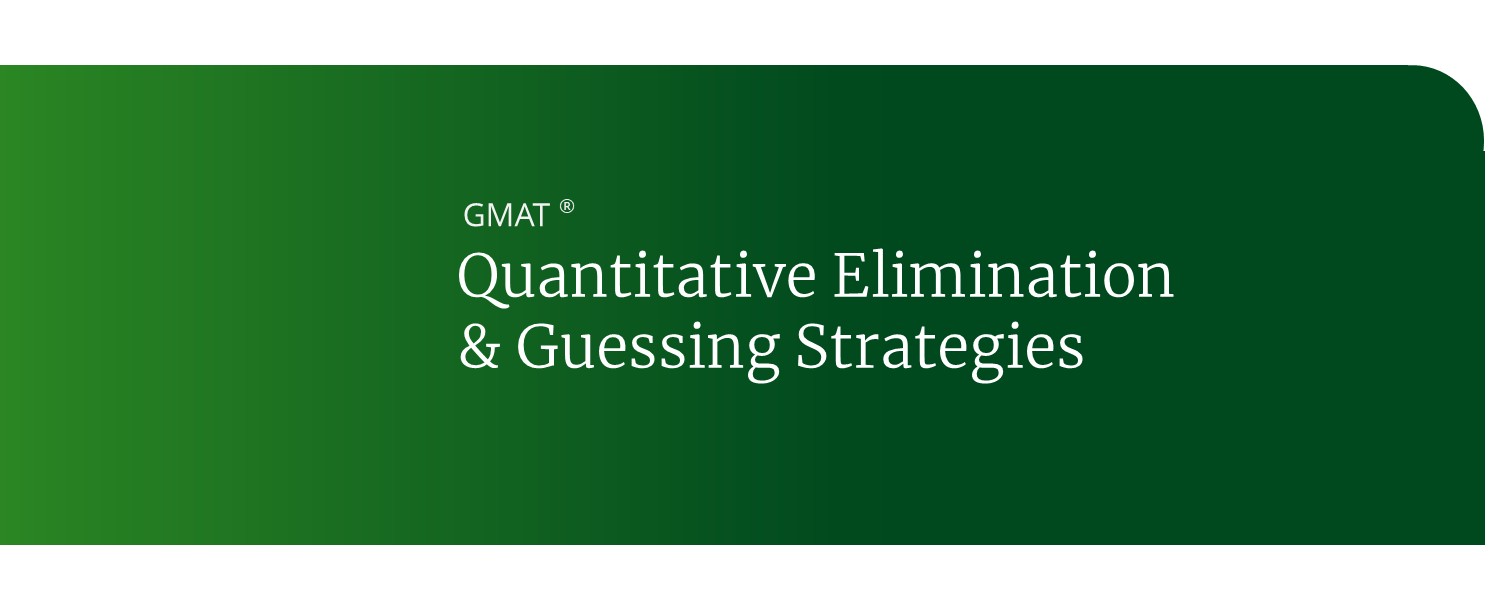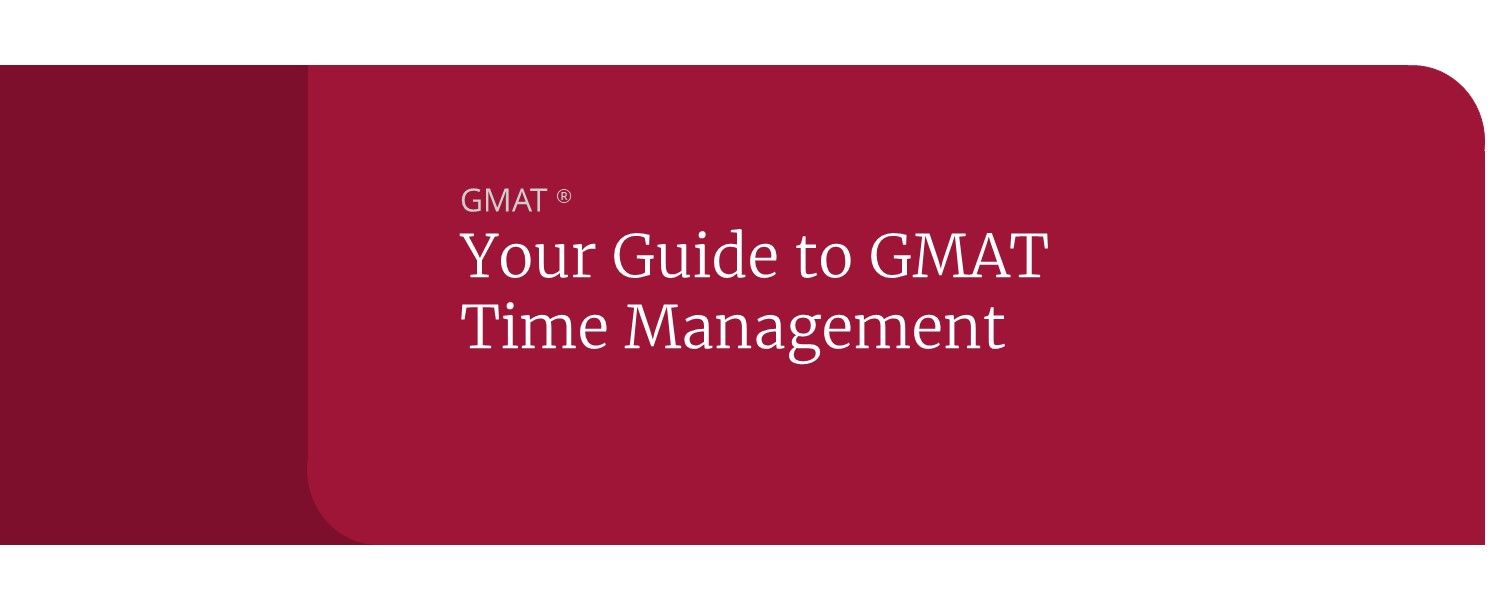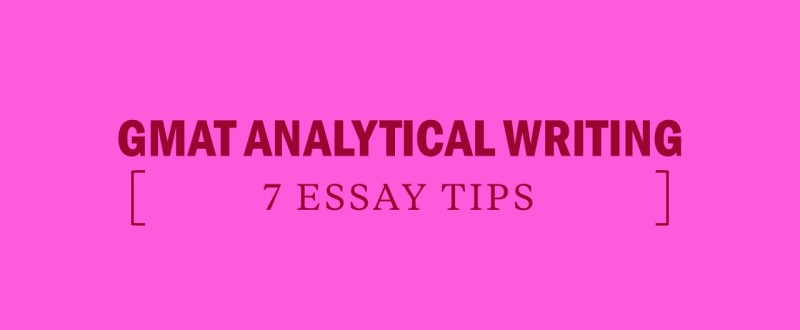GMAT Quantitative Elimination Strategies
As with all multiple choice tests, there is more to strategy than simply trying to answer the question. It’s true that GMAT problem writers are pretty good at using answer choices to set traps, but as you learn more and more about the test, not only will you get better at avoiding those traps, but you’ll also begin to view the answer choices as helpful gifts from the testmaker.
An adaptive test such as the GMAT is going to push the limits of what you’re capable of doing, or at least what you’re capable of doing in 2 minutes. While no elimination or guessing strategy works 100% of the time, the strategies in this article are among the best ones that we’ve used ourselves to achieve 99th percentile GMAT scores.
One note before diving in: These strategies are presented for situations in which you’ve decided not to take the time to fully work a problem out. They don’t apply if you decide you can and should do the work; sometimes, the correct answer really is something you would have eliminated with a guessing strategy.
GMAT Quantitative Elimination Strategy 1: Eliminate the Oddballs
There is strength in numbers. When the answer choices have noticeable differences, eliminate the oddballs.
This strategy can be applied in several different situations: If some of the answer choices are negative and some are positive, eliminate whichever there are fewer of. In a Roman numeral problem, eliminate the answer choices that contain Roman numerals that show up in less than half of the answer choices. If the answer choices are numbers and some of them are clustered close together, eliminate the outliers.
Quant Elimination Sample Question 1
If 0 < a/b < c, which of the following must be positive?
I. ca + cb
II. ac + b
III. c + ab
A. I only
B. I and III only
C. II only
D. II and III only
E. III only
Quant Elimination Sample Question 1 Answer and Explanation
The elimination strategy can get you to the right answer. The Roman Numeral I shows up only twice, and the Roman Numeral II also shows up only twice. Eliminate the answers that contain these two numerals, i.e. eliminate everything except (E). The Roman Numeral III shows up three times, that’s more than half, and it turns out to be the right answer.
Why? Based on the given inequality, c has to be positive, while a and b have to have the same sign—either both positive or both negative. If a and b are both negative, then Roman Numeral I, ca + cb, will be two negative numbers added together, so this one doesn’t have to be positive. Eliminate answers (A) and (B).
If a and b are both negative, then Roman Numeral II, ac + b, will also be the sum of two negative numbers. This one doesn’t have to be positive either. Eliminate (C) and (D).
Only (E) remains, so it must be that Roman Numeral III will always be positive. Why? Since a and b have the same sign, ab is always positive. The inequality in the question stem shows that c is also positive. So Roman Numeral III, c + ab, is the sum of two positive numbers.
The correct answer is (E).
GMAT Quantitative Elimination Strategy 2: Avoid One-Step Math
When guessing, don’t pick an answer choice that is just a simple combination of the numbers in the problem.
It’s unlikely that the GMAT problem writers are going to write an entire question just to see whether you can add, subtract, multiply, or divide two numbers. So, if you spot that any of the answer choices can be calculated in just one step using the numbers in the problem, eliminate those and guess elsewhere. (Note that this also applies to zero step math: answer choices that simply repeat the numbers from the problem, without doing any math.)
Quant Elimination Sample Question 2
Marisa, Christian, and several other volunteers spent yesterday stuffing envelopes for a political campaign. Marisa stuffed 1/8 of all of the envelopes stuffed yesterday. Christian stuffed 1/12 of all of the envelopes stuffed yesterday. What fraction of all of the envelopes stuffed only by Marisa and Christian did Marisa stuff?
A. 1/96
B. 1/8
C. 3/5
D. 2/3
E. 4/5
Quant Elimination Sample Question 2 Answer and Explanation
The numbers in the problem are 1/8 and 1/12. Eliminate answer choices that are a one-step combination of these fractions or of the numbers 8 and 12. Answer choice (A) is the product of 1/8 and 1/12. Answer choice (B) is a number from the problem. Answer choice (D) is equivalent to 8/12. Eliminating those three gets you down to (C) and (E). Could you estimate from there? From the story, Marisa did more of the work than Christian. How much more?
Answer (C) says she did 60% of the work and answer (E) says she did 80%…but 80% is way too high. That would mean Marisa did 4 times as much work as Christian (80% to 20%).
And here’s how the math works. Try some real numbers. Choose a number that’s divisible by both 8 and 12—let’s say a total of 24 envelopes were stuffed by the entire team. Marisa stuffed 1/8 of them, or 3 total, and Christian stuffed 1/12, or 2 total. Together, they stuffed 5 envelopes.
Since Marisa stuffed 3 out of the 5, the correct answer is 3/5.
The correct answer is (C).
More GMAT Quantitative Elimination and Guessing Strategy Practice Questions
Below are 4 more GMAT practice questions and answer explanations to help you practice elimination and guessing strategies on the Quantitative section of the GMAT.
GMAT Practice Question 1
After being marked down 20 percent, a calculator sells for $10. What was the original selling price?
A. $22.50
B. $12.50
C. $12
D. $9.80
E. $7.50
GMAT Practice Question 1 Answer and Explanation
You can eliminate (A), (D), and (E) based on understanding the simple story. Choices (D) and (E) are less than $10, so they don’t make sense as answers for the price before the discount. And choice (A) is just too big. It’s more than double the discounted price, but the discount was only 20%.
Now you’ve got it down to (B) and (C). Getting a problem down to two answer choices without ever picking up your pen is a definite win! Don’t dig your heels in at this point and spend two minutes working the problem out. Guess one of these two and move on!
But which one is a better guess? Well, choice (C) is an oddball: It’s the only one of the five answer choices that is an integer. That’s enough for you to lean towards choosing (B).
It turns out that (C) is the result of a faulty calculation: 20 percent of $10 is $2, so (C) is $10 + 20% of $10. But the number you need to take 20% of is the original price, not the discounted price. The correct answer is (B). (And it does work! 10% of $12.50 is $1.25, so 20% is $2.50. And then $12.50 – $2.50 = $10.)
The correct answer is (B).
GMAT Practice Question 2
If w is 10 percent less than x, and y is 30 percent less than z, then wy is what percent less than xz ?
A. 10%
B. 20%
C. 37%
D. 40%
E. 100%
GMAT Practice Question 2 Answer and Explanation
Be skeptical of (A) since it repeats the value 10% from the problem. Also be skeptical of (B), (D), and (E) since they can be derived from simple calculations.
(B) 20% = 30% – 10%
(D) 40% = 30% + 10%
(E) 100% = 10% × 10
Elimination strategies point to (C) as the answer, and it is correct.
The first clause tells you that w = 0.9x, and the second clause tells you that y = 0.7z. If you multiply w and y, you get wy = (0.9x)(0.7z) = (0.63)(xz). Or, stated as a percent, wy is 63% of xz. Thus, wy is 100% – 63% = 37% less than xz.
You can also plug in real values. If y is 30% less than z, then call z = 100 and y = 70. Next, w is 10% less than x, so call x = 10 and w = 9. The value of wy = (70)(9) = 630 and the value of xz = (10)(100) = 1,000. Therefore, wy is 63% of xz, which is the same as 37% less than xz.
The correct answer is (C).
GMAT Practice Question 3
What is the smallest number k such that (8!)(k) is a perfect square?
A. 42
B. 56
C. 64
D. 70
E. 7!
GMAT Practice Question 3 Answer and Explanation
This is a tough problem, but if you know how to eliminate and guess effectively, you still have a good shot at getting it right!
First, eliminate (E). It is structurally different from the rest of the answer choices, which are all integers not factorials. Beyond that, it is also way bigger than the other answer choices.
A factorial is the product of all of the integers starting with the given number and going down to 1, so 8! is 8 × 7 × 6 × 5 × 4 × 3 × 2 × 1. Look at choices (A) and (B). Choice (B) is 8 × 7, the two biggest numbers in that factorial. That seems like one-step math. Similarly, choice (A) is 7 × 6. Not only is that one-step math, but it doesn’t make sense to use those two numbers but none of the other ones. Also, (A) is the smallest answer choice, so it’s not a good guess when they ask you for the smallest number.
Choice (C) can be eliminated first for being one-step math (it’s 82),but also because it’s illogical: Since 64 is a perfect square itself, multiplying it by something else would only yield a perfect square if the other number was already a perfect square, in which case the correct answer would be 1.
Here’s the technical solution. (You were warned that it’s a tough problem!) If you write the prime factorization of a perfect square, all of the prime factors should show up in pairs. This means that it should contain an even number of any prime factors that appear. Consider the numbers from 8 down to 1. There are four prime numbers: 2, 3, 5, and 7. So you have at least one of each of those. The 1 is inconsequential; ignore it. You are left with 4, 6, and 8 to consider: 4 gives you two more 2s, 6 gives you another 2 and another 3, and 8 gives you three more 2s.
Collecting all those prime factors gives you 8! = 27325171. The only one of the exponents that is even is the 2 exponent on the prime factor 3. Thus, to make this a perfect square, you’d need another 2, another 5, and another 7.
Since 2 × 5 × 7 = 70, the correct answer is (D).
GMAT Practice Question 4
[Imagine that this is some complicated question that you’re not at all sure how to approach.]
- A. –3
- B. –2
- C. –1
- D. 0
- E. 2






